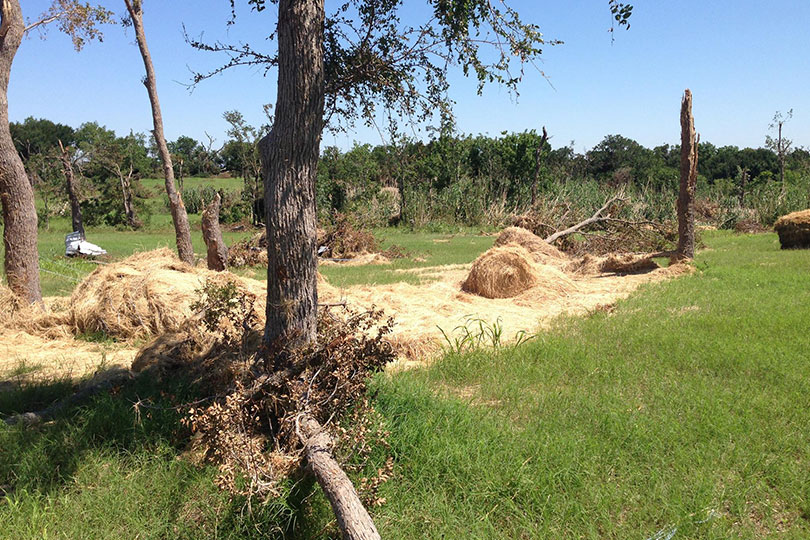By Jennifer Dorsett
Field Editor
In Texas, spring is synonymous with wildflowers, scenic beauty and tornado season.
National Weather Service (NWS) Fort Worth Meteorologist-in-Charge Tom Bradshaw said the geographic location and topography of Texas and other central U.S. states make the region prime tornado country.
Texas also has the highest average annual number of tornadoes in the U.S.
“On average, there are around 150 tornadoes in Texas annually,” Bradshaw said. “The months of April and May, climatologically speaking, are the heart of the tornado season.”
Texas has had 64 reported tornadoes so far in 2020, according to the National Oceanic and Atmospheric Administration (NOAA).
Bradshaw said, unfortunately, there are more to come, so it’s best to be prepared and have a plan if a tornado hits.
“Don’t wait until a tornado warning is issued to start thinking about what you should do,” he said. “Preparedness is key. Have an idea of where you might go and what steps you’ll take if severe weather comes to your area.”
Tornado safety tips
Some are fortunate enough to have in-ground safety shelters or safe rooms, but that’s not the reality for most Texans, Bradshaw noted.
In lieu of a storm shelter, Bradshaw recommends seeking shelter in the central part of the building.
“Get as close to the middle as possible,” Bradshaw said. “Put as many walls as you can between yourself and the exterior of the house and any windows, because those barriers are going to help protect you from dangerous flying debris.”
Closets, pantries and bathrooms are likely areas to seek protection, but Bradshaw cautioned it’s not the type of room that makes it safe. It’s the location relative to outside walls.
In a multi-story building like an office building or apartment complex, people should get to the lowest floor possible, Bradshaw added.
Being on the first floor is much safer, because higher stories are more likely to sustain extreme wind damage, making them unstable.
The most dangerous place to be in the event of a tornado is outdoors, Bradshaw said.
“If you happen to be outside, try to have a plan of action,” he said. “Try to get to a structure as quickly as you can.”
If working outside or in the field, Bradshaw recommends maintaining vigilance and being aware of the possibility of any approaching severe weather.
The great thing is almost all local news stations have weather apps these days,” he said. “They do a great job of keeping people up-to-date on severe weather.”
Many apps let users customize their location, Bradshaw added. He also advises Texans to ensure Wireless Emergency Alerts are enabled on cell phones.
The system, which was launched by the Federal Emergency Management Service and Federal Communications Commission in 2012, can be used by government officials to target emergency alerts to specific geographic areas, such as a tornado warning for a county or several counties in the same area.
“Unfortunately, if you’re caught outside or in a vehicle, there’s not a real safety anecdote for that situation,” Bradshaw said. “Neither option is a good option. We really try to counsel folks to not get in that situation to begin with. So stay on top of the forecast, have multiple ways of receiving warnings and just try to have a plan for what you’ll do if a storm occurs.”

